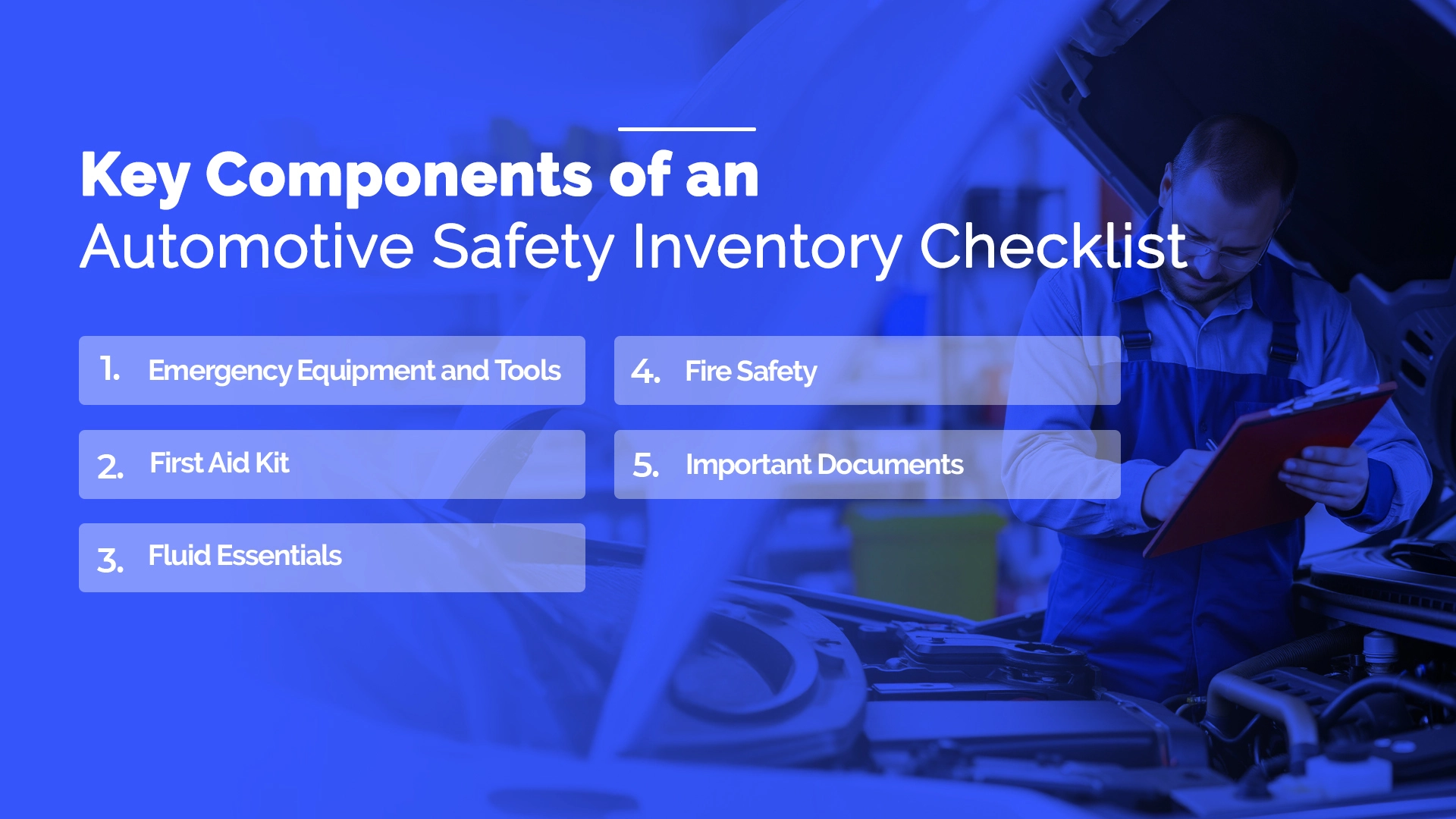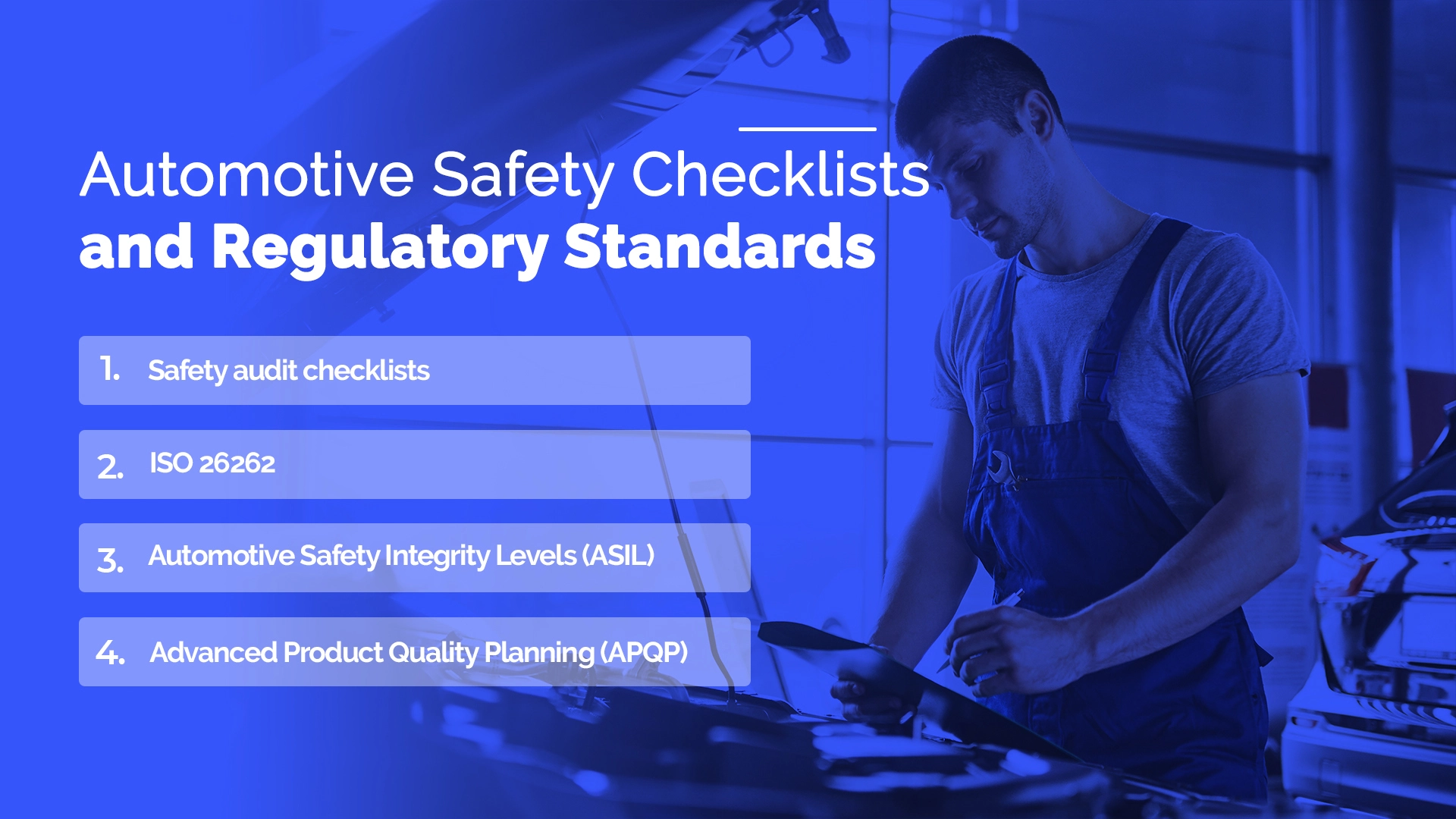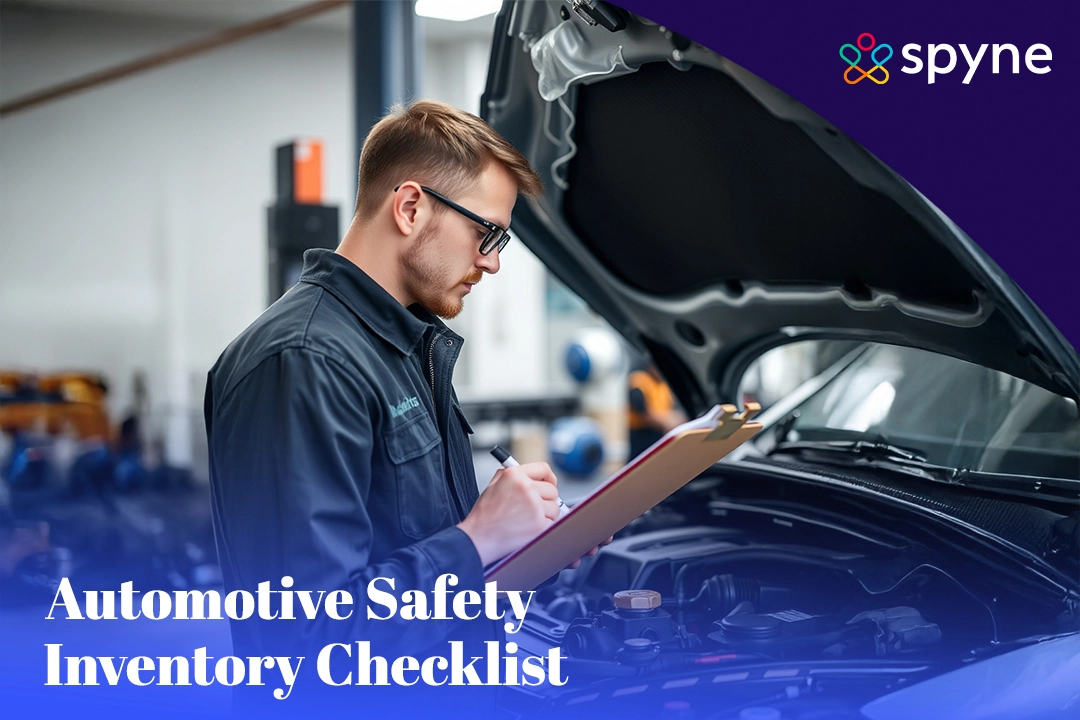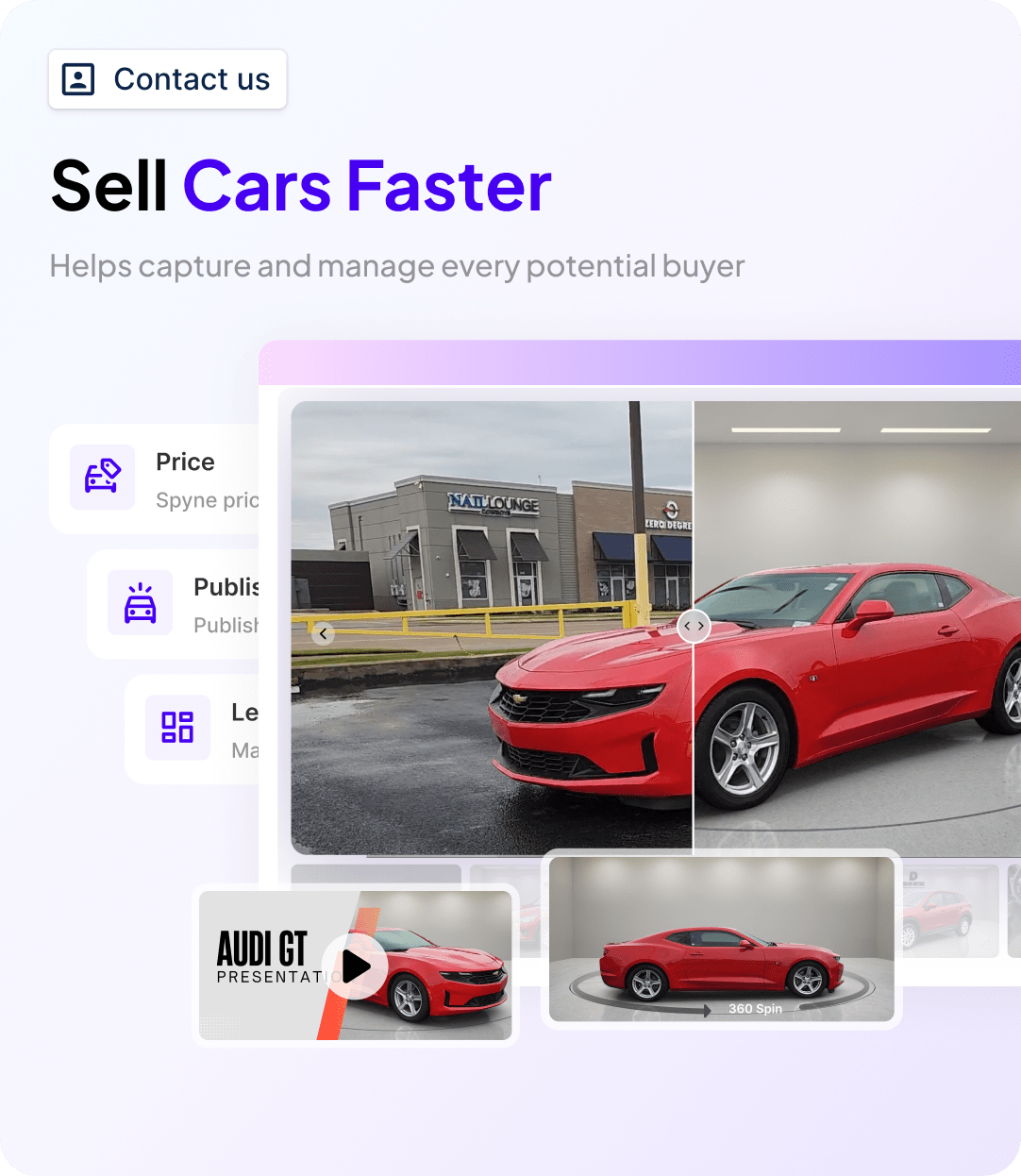Are you an owner of a car with a mindset that vehicle safety is just about airbags and anti-lock brakes? No, it’s not only that. It’s about being aware of your car’s condition through regular inspections. Whether you’re a car owner, fleet manager, or automotive professional, having a well-proven safety inventory checklist can prevent accidents, extend the life of the vehicle, and save you a lot of money, especially on repairs.
In this blog, we have laid a comprehensive guide for the process of creating the ultimate car safety inventory checklist to keep your vehicle fully maintained.
Importance of Vehicle Inventory Checklist
An automotive safety inventory checklist can give you the foundation to ensure that you have the right tools to ensure safety and maintenance for your vehicle. Regular vehicle maintenance could prevent thousands of accidents each year. A systematic approach to vehicle inspection ensures the following:
1. Critical safety components are regularly monitored
Any kind of checklist always helps make the task easier. The same logic goes for a vehicle inventory checklist. This will help you highlight the critical safety components and not the exact touchpoints.
2. Potential issues are identified before they become dangerous
When you have a checklist in hand, any issues about car safety can be highlighted easily, before any mishap takes place.
3. Maintenance records are properly documented
If you are a fan of organizing stuff, then a checklist is a must for you. This will help you maintain records of maintenance documents. You will know exactly when the last monitoring occurred, and the timeline in which you need to check it again.
4. Vehicle resale value is protected
When you have a checklist, you have laid down a plan of action for all the activities of car safety maintenance. This helps you increase the value of the car, as the car’s internal condition is maintained.
5. Enhances safety
When you have a checklist in hand, it becomes easy for you to understand and determine the parts of the car that might have safety issues. This makes you more cautious and enhances safety. You are always prepared for emergencies like problems in the engine, flat tires or accidents.

Key Components of an Automotive Safety Inventory Checklist

1. Emergency Equipment and Tools
i) When traveling you must check for proper inflation and any wear and tear, for that you require inflated tires.
ii) Jack and Lug Wrench, in case you have to replace a flat tire, a jack and lug wrench is required.
iii) It happens many times that if the car is not used for a long time, the battery deteriorates. At that time a jumper cable comes in handy.
iv) Portable Tire Inflator acts as a quick fix for low-pressure tires.
v) A Tow Strap or Rope helps if your car gets stuck or needs towing.
vi) A basic tool kit Includes screwdrivers, wrenches, and pliers for minor repairs.
2. First Aid Kit
A first aid kit is crucial in any car safety inventory checklist, preparing for unexpected medical emergencies. Essential contents include bandages, gauze, antiseptic ointments, pain relievers, and basic medical supplies to provide immediate care during unexpected health incidents while traveling or driving.
3. Fluid Essentials
Fluid essentials are another important aspect of an automotive safety inventory checklist. There are different oils used for different features. Like, engine oils are used for top-ups, coolant or anti-freeze fluids are used to prevent the car from getting overheated, windshield washers for clear visibility, and brake fluid for maintenance needs of the brakes.
4. Fire Safety
There are many recorded cases where cars catch fire due to flammable elements like car perfume, overheating of the engine, presence of petrol, etc. So keeping a small automotive-grade fire extinguisher protects against this.
5. Important Documents
The Vehicle registration and insurance papers. Roadside assistance contact details must always be available in the car
Creating an Effective Automotive Safety Checklist
Creating an effective automotive safety inventory checklist is an important factor in ensuring a vehicle’s safety, life, reliability, and performance. If you regularly inspect various components it will help you identify issues early and prevent you from any breakdowns or accidents. A comprehensive checklist should address key areas such as tires, brakes, lights, fluids, and overall vehicle functionality.
1. Tires and Wheels
Tires form the critical foundation of vehicle mobility, demanding meticulous inspection during safety checks. Use a reliable tire pressure gauge to verify correct inflation, carefully examining treads for a minimum 2/32 inches depth and identifying any uneven wear, bald spots, cuts, or bulges. Always verify the spare tire’s condition and proper inflation, ensuring comprehensive wheel safety before any driving commitment.
2. Braking Systems
The braking system is yet another crucial element. You need to check the brake pedal to see if it is working properly! Monitor the brake fluid levels and ensure there are no leaks present. Do not forget to verify that the parking brake is completely functional.
3. Lighting
Lighting and electrical elements are also important for safety. It is essential to check all outside lights, such as headlights, brake lights, turn signals, and hazard lights, to confirm they are all working properly. Inspect the interior lights too. It is important to check that the horn is functioning and windshield wipers are working well. Additionally, check whether the battery terminals are clean and securely attached.
4. Fluids
Fluid maintenance is required regularly for the vehicle to work optimally. You must check coolant levels and leaks. Additionally, check for power steering fluids and gearbox. To ensure clear visibility in all weather conditions, make sure the windshield washer fluid is topped off.
5. Seatbelts and Airbags
Seat belts, airbags, and mirrors should all be operational and in good condition. Examine seat belts to ensure proper operation, and use diagnostic equipment to assess airbag performance. Inspect mirrors for alignment and imperfections and adjust them according to your body posture. Additionally, you must keep an emergency kit with jumper cables, first-aid supplies, a flashlight, and warning triangles immediately available. You must ensure that fire extinguishers are present and have not passed their expiration date.
6. Body and Glass of the Vehicle
Vehicle body and glass safety require a thorough inspection of windows and windshield for cracks or chips, ensuring doors, locks, and hinges operate smoothly. Check the body for rust or damage, and verify the license plate is securely mounted and clearly visible
Regular checking of the car according to this checklist and solving any problem that arises, quickly will certainly find that your car is safe and dependable. Keep all the service and safety checks recorded to see how the vehicle has changed and evolved in a given period of time.
Common Mistakes to Avoid When Performing Safety Checks
Sometimes the responsibility of being a car owner can become overwhelming and therefore create a safety hazard. Car safety checks are very important for proper functionality. But sometimes due to lack of time or just irresponsibility, we often fail to do it.
To make it simple for you, we have analyzed some root causes of accidents to come up with a list of common mistakes you should watch out for while conducting safety checks on your car.
1. Skipping Routine Checks
One of the most common mistakes that people make is neglecting routine inspection of the vehicle. If you rely solely on annual or irregular maintenance can allow issues to go unnoticed until they become major problems. To avoid this you can create a schedule for routine checks, especially for critical components like brakes, tires, and fluids.
2. Ignoring Small Issues
There are times when we overlook minor problems such as a small oil leak, slightly worn tires, or a faint noise from the brakes. This can lead to more significant and costly issues later. You must address these minor issues as soon as possible to avoid compounded damage.
3. Getting to Check the Spare Tire
Many people focus only on the tires that are currently being used and forget the spare ones. An underinflated or damaged spare tire can leave you stranded in case of an emergency. Always ensure it’s in good condition and properly inflated.
4. Overlooking the Battery
There are times when our vehicles remain unused, which drains out the battery. Failing to check the battery is a common mistake that people make. Corrosion on terminals, loose connections, or low charge levels can lead to starting issues. You must regularly clean the terminals and test the battery to ensure it holds a proper charge.
5. Not Testing Lights and Indicators
Generally, individuals assume that lights and indicators are functioning correctly. In case you neglect to check them regularly, it can result in reduced visibility or communication with other drivers, especially in low-light conditions or during emergencies.
6. Neglecting Fluid Levels
Fluids such as engine oil, coolant, brake fluid, and windshield washer fluid are essential for a vehicle’s functioning. Neglecting to inspect or change these fluids may result in overheating, brake malfunction, or reduced visibility.
7. Failing to Inspect Belts and Hoses
The missed elements during inspections are belts and hoses during safety inspections. However, it is of utmost importance to check for cracks, wear, or looseness in these components as it can cause engine failure or overheating. You must include them in your routine checks to ensure their integrity.
8. Rushing the Inspection
Rushing can often result in harm, especially when you are operating large vehicles. A hurried examination raises the chance of overlooking critical information. You should consistently allocate time to carefully examine every part, adhering to a structured method to guarantee that nothing is missed.
9. Using Improper Tools
Employing inappropriate tools or equipment may result in erroneous evaluations or harm to parts. It’s essential to invest in top-notch equipment tailored for your vehicles.
10. Overlooking Emergency Preparedness
Numerous safety inspections concentrate exclusively on the car’s mechanical parts while neglecting emergency readiness. Neglecting to check the fire extinguisher, first-aid kit, or emergency kit may render you powerless during an emergency. For that reason, our previously mentioned vehicle inventory checklist is quite useful.
Automotive Safety Checklists and Regulatory Standards

Safety audit checklists
The safety audit checklists help in the evaluation of safety practices, procedures, and conditions in automotive manufacturing industries. They generally have an eye for identifying potential hazards and ensuring regulatory compliance, which promotes a safe working environment for the employees and generates trust amongst the consumers.
ISO 26262
The ISO 26262 regulatory standards outline technical safety requirements (TSRs) and specifications for automotive suppliers and technology developers. It has a risk-based approach to determine the level of risk associated with hazardous situations.
Automotive Safety Integrity Levels (ASIL)
In this classification system the hazards are classified into four levels, denoted as A through D. ASIL D represents the highest level of risk, while ASIL A represents the lowest level of risk.
Advanced Product Quality Planning (APQP)
In this audit, the companies look into the fact that the product meets customer requirements before it is put into production. This ensures that it becomes cost-effective.
Best Practices for Dealerships Using Safety Checklists
Car dealership businesses must also follow practices that help them maintain safety at the workplace, both for their employees and for their customers. Here’s a list of best practices for dealers using a safety checklist.
- Comprehensively checking the vehicles in the inventory- You must standardize vehicle checking procedures for all service technicians of your firm. You must ensure that they are well-trained and know all the fundamentals of the automotive industry. Include inspection points for brakes, tires, lights, and fluid levels.
- Digital Documentation- Use digital tracking platforms that build checklists and remind the service providers about the safety checks on real real-time basis. This helps in maintenance as well as building a good service base for your organization.
- Training and development- Staff training focused on meticulous checklist procedures, combined with transparent customer communication, builds trust and provides legal protection through detailed, timestamped records that mitigate potential liability risks.
- Feedback and control- Taking feedback after safety checks ensures the quality of work and evolves the safety measures.
A thorough vehicle inspection is the most comprehensive and important of vehicle maintenance. The car’s safety goes beyond basic features like child lock or airbags. By examining key safety equipment as mentioned in the blog you can proactively identify the issues in your vehicle and correct it before they escalate. A well-written automotive safety checklist comes to the rescue when you want to consistently update your vehicle, prepare for emergencies, and increase the lifespan of your vehicle.






